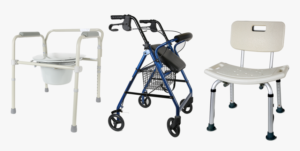
Durable Medical Equipment billing and credentialing represents one of the most regulated and complex areas within healthcare revenue cycle management. DME suppliers face tough requirements from Medicare, Medicaid, and commercial payers while managing frequent policy changes and documentation mandates. Knowledge of these changes is fundamental for maintaining a profitable DME business while ensuring full compliance with federal and state regulations.
DME Billing Fundamentals
DME billing differs substantially from traditional medical services billing due to the unique nature of equipment provision and ongoing patient care. The billing process encompasses initial equipment delivery, ongoing maintenance, replacement supplies, and patient education services. Each component requires specific documentation and coding approaches that align with payer requirements and regulatory standards.
 The distinction between rental and purchase billing creates additional complexity in DME operations. Rental equipment such as CPAP machines, hospital beds, and oxygen concentrators requires monthly billing cycles with specific documentation of continued medical necessity. Purchase items including wheelchairs, walkers, and diabetic supplies follow different billing protocols with one-time payment structures and warranty considerations.
The distinction between rental and purchase billing creates additional complexity in DME operations. Rental equipment such as CPAP machines, hospital beds, and oxygen concentrators requires monthly billing cycles with specific documentation of continued medical necessity. Purchase items including wheelchairs, walkers, and diabetic supplies follow different billing protocols with one-time payment structures and warranty considerations.
Medicare’s competitive bidding program has significantly impacted DME billing by establishing reimbursement rates for specific product categories in designated metropolitan areas. Suppliers must understand these contracted rates and adjust their billing practices accordingly, while also managing inventory and service levels to maintain profitability within the established pricing structure.
Prior authorization requirements have become increasingly stringent across all payer types. Power wheelchairs, custom orthotics, and high-cost respiratory equipment often require detailed clinical documentation and physician attestations before approval. The authorization process can extend over weeks or months, requiring careful coordination between suppliers, physicians, and insurance companies.
Common Billing Challenges in DME
DME suppliers encounter numerous billing obstacles that can significantly impact cash flow and operational efficiency. Documentation requirements have become increasingly detailed, with payers demanding specific physician notes, diagnostic codes, and functional assessments to support medical necessity claims. Any gaps in documentation can result in immediate claim denials or post-payment audits.
 Certificate of Medical Necessity forms remain a cornerstone of DME billing but require precise completion to avoid processing delays. These forms must align perfectly with physician documentation and patient conditions, creating coordination challenges between suppliers and prescribing healthcare providers. Incomplete or inconsistent CMN information represents one of the leading causes of claim rejections.
Certificate of Medical Necessity forms remain a cornerstone of DME billing but require precise completion to avoid processing delays. These forms must align perfectly with physician documentation and patient conditions, creating coordination challenges between suppliers and prescribing healthcare providers. Incomplete or inconsistent CMN information represents one of the leading causes of claim rejections.
Delivery confirmation and proof of receipt documentation present ongoing challenges for DME suppliers. Payers require detailed records of equipment delivery dates, patient signatures, and setup verification. Managing these requirements across multiple delivery locations and patient encounters requires sophisticated tracking systems and staff training.
HCPCS coding in DME billing creates frequent coding errors that lead to claim denials or incorrect reimbursement amounts. Unlike standard CPT codes used in medical services, HCPCS codes include detailed modifiers that specify equipment features, rental periods, and geographic considerations. Accurate code selection requires ongoing education and quality assurance programs.
Key Elements of Effective DME Credentialing
DME credentialing involves multiple regulatory bodies and accreditation organizations, each with specific requirements and renewal timelines. Medicare DME supplier enrollment forms the foundation for most DME operations, requiring detailed business information, ownership documentation, and compliance attestations. The Medicare enrollment process includes background checks on all owners and managing employees, creating potential delays if any issues arise.
State licensing requirements vary significantly across jurisdictions but generally include business registration, sales tax permits, and specific DME supplier licenses. Some states require additional certifications for oxygen services or complex rehabilitation technology, adding layers to the credentialing process.
Accreditation through organizations such as the Accreditation Commission for Health Care or The Joint Commission has become essential for maintaining payer contracts and demonstrating quality standards.
The accreditation process involves:
- Facility inspections and equipment verification
- Staff training and certification documentation
- Quality management system implementation
- Patient satisfaction monitoring programs
- Ongoing compliance monitoring and reporting
Commercial insurance credentialing presents additional challenges as each payer maintains unique requirements and application processes. Many insurance companies require specific liability coverage limits, surety bonds, and financial stability documentation before approving supplier applications.
Technology Integration and Inventory Management
Modern DME operations require sophisticated software systems that integrate billing, inventory management, and patient tracking functions. These systems must handle convoluted rental billing cycles, track equipment maintenance schedules, and manage patient supply deliveries while maintaining accurate inventory levels.
 Electronic data interchange capabilities have become essential for efficient claims processing and status tracking. EDI systems automate claim submissions, eligibility verification, and payment posting while reducing manual data entry errors that can delay reimbursement.
Electronic data interchange capabilities have become essential for efficient claims processing and status tracking. EDI systems automate claim submissions, eligibility verification, and payment posting while reducing manual data entry errors that can delay reimbursement.
Inventory management systems must track equipment through multiple lifecycle stages including initial purchase, patient assignment, maintenance intervals, and eventual replacement or disposal. These systems help optimize inventory levels while ensuring equipment availability for patient needs.
Patient management platforms integrate with billing systems to track delivery schedules, maintenance appointments, and supply replenishment cycles. These systems help ensure continuity of care while supporting accurate billing for ongoing services.
Regulatory Compliance and Quality Assurance
DME suppliers must comply with numerous federal regulations including Medicare Supplier Standards, HIPAA privacy requirements, and FDA device regulations. The 21 Medicare Supplier Standards establish specific operational requirements covering everything from business licensing to patient complaint procedures.
Quality assurance programs play a vital role in maintaining billing accuracy and regulatory compliance. Regular audits of documentation practices, coding accuracy, and inventory management help identify potential problems before they result in compliance violations or payment denials.
Patient safety requirements mandate specific equipment maintenance schedules, safety inspections, and recall management procedures. These requirements impact billing by ensuring that only properly maintained equipment generates reimbursement claims.
The False Claims Act creates significant liability for DME suppliers who submit inaccurate claims or fail to return overpayments. Understanding these requirements and implementing compliance programs helps protect suppliers from potential penalties and legal action.
Optimizing Revenue Through Strategic Management
Successful DME billing requires proactive management of payer relationships and contract negotiations. Understanding each payer’s specific requirements, preferred communication methods, and payment timelines helps optimize revenue collection and reduce administrative burden.
Denial management programs help suppliers identify patterns in claim rejections and implement corrective measures.
Common denial reasons in DME include:
- Insufficient documentation of medical necessity
- Incorrect HCPCS code selection or modifier usage
- Missing or expired prior authorizations
- Delivery date discrepancies or missing proof of delivery
- Patient eligibility issues or coverage limitations
Staff training and education represent critical investments in billing accuracy and compliance. Regular updates on regulatory changes, payer policy modifications, and coding requirements help prevent costly errors while ensuring optimal reimbursement rates.
Patient education programs not only improve health outcomes but also support billing accuracy by ensuring patients understand their coverage responsibilities and equipment maintenance requirements. Well-informed patients are more likely to comply with therapy protocols, supporting continued medical necessity for rental equipment.
Where’s Everything Going in DME?
The DME industry continues to face pressure from healthcare cost containment initiatives and value-based care models. These trends are leading to increased focus on patient outcomes, equipment utilization rates, and cost-effectiveness measures that may influence future reimbursement structures.
 Remote patient monitoring integration with traditional DME services is creating new billing opportunities and requirements. Connected devices that track patient compliance and equipment performance provide valuable data for supporting medical necessity claims while potentially qualifying for additional reimbursement categories.
Remote patient monitoring integration with traditional DME services is creating new billing opportunities and requirements. Connected devices that track patient compliance and equipment performance provide valuable data for supporting medical necessity claims while potentially qualifying for additional reimbursement categories.
Telehealth integration is expanding DME service delivery models, allowing suppliers to provide remote patient education, equipment training, and troubleshooting services. These capabilities may create new billable service categories while improving patient satisfaction and compliance rates.
Artificial intelligence applications in DME operations are beginning to influence inventory management, predictive maintenance scheduling, and patient risk assessment. These technologies help optimize operations while providing data analytics that support business decision-making and regulatory compliance.
The increasing emphasis on patient experience and satisfaction scores is influencing how DME suppliers approach service delivery and billing practices. Suppliers who invest in customer service excellence and streamlined billing processes are better positioned to maintain payer contracts and patient referrals.
Managing DME billing and credentialing requires specialized expertise, ongoing attention to regulatory changes, and strategic planning to maintain financial stability while providing essential medical equipment services. Suppliers who invest in proper systems, staff training, and compliance programs position themselves for long-term success in an increasingly complex regulatory environment. The combination of technological advancement, regulatory oversight, and changing healthcare delivery models continues to reshape the DME terrain, requiring suppliers to adapt their operations while maintaining focus on patient care and business sustainability.
Let our team of billing professionals guide you to prosperity. Contact us today to speak to a member of our team on how we can help your DME group.
